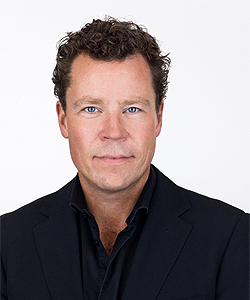 Energy efficiency first! This is the core principle of the energy strategy for Europe, and for the "Clean Energy for all" package launched by the Commission by the end of 2016. This principle acknowledges that Europe's biggest domestic energy source is energy efficiency and highlights the importance of solutions that take into account energy savings.
Energy efficiency first! This is the core principle of the energy strategy for Europe, and for the "Clean Energy for all" package launched by the Commission by the end of 2016. This principle acknowledges that Europe's biggest domestic energy source is energy efficiency and highlights the importance of solutions that take into account energy savings.
This is the right priority. But it has to go hand in hand with ambition, and in my mind we should be way more ambitious than the energy efficiency target of 30% for 2030 as proposed by the Commission. You cannot call for ambition and then sit on your hands. You have to practise what you preach, and that is why I see it as my job and a job for the rest of the European Parliament to make the case for raising the level of ambition and the binding energy efficiency target to 40% for 2030.
As Vice President of the ITRE committee, rapporteur for the revision of the ACER regulation, and shadow rapporteur on the revision of the Energy Performance of Buildings Directive (EPBD), I am facing the challenge of strengthening and translating the energy efficiency principle into each paragraph of the eight proposals of the Clean Energy package.
Buildings account for approx. 38% of the overall energy consumption in the EU and 75% of EU's buildings stock is still energy inefficient. In other words, buildings are low-hanging fruits in terms of efficiency and energy savings. We have to speed up the process of renovation and further look into expansion of district heating and cooling, which would lead to greater energy efficiency and lower GHG emissions.
The low-hanging fruits in terms of energy savings through the ACER regulation is perhaps not as apparent as the energy savings of renovating our building stock. On paper, it is “just” a regulation of an agency that facilitates the cooperation between national energy regulators. However, the gains from improving the cross-border cooperation and the efficient use of the capacity of the energy network is huge. We need to use every opportunity possible to live up to our commitments from the Paris Agreement and the 2030 EU Climate and Energy framework.
One way of harvesting is by improving the efficient use of energy generation capacity. Right now, there are indications of overcapacity of energy generation in Europe in spite of decline in conventional generation capacity. Numbers from 2015 show that on average 28% of high-voltage alternating current interconnector's physical capacity is available for trading in 2015 according to ACER. In plain English; only a small part of the physical capacity is actually used, and this is primarily caused by the lack of regionally developed capacity methodology.
We do not need more capacity to generate energy on an EU level. What we need is to use it better by at all times using the lowest-cost capacity and balancing energy cross-border. Estimates from 2013 show that a common balancing market would amount to a gain of 600-900 million euro per year. Although these numbers may be a bit outdated, they nevertheless illustrate the clear benefits of improving the efficient use of capacity.
To obtain this, we need a well-functioning market, where clean and inexpensive energy flow freely across borders provided and supervised by a well-functioning Agency (ACER).
By putting efficiency first, other benefits will follow; cost savings, growth, thousands of new jobs and healthier living. Moreover, Europe will be less dependent on Russian gas and of oil from the Middle East.
The Clean Energy package is a unique opportunity in terms of and make all these benefits realities. Let us go to work.